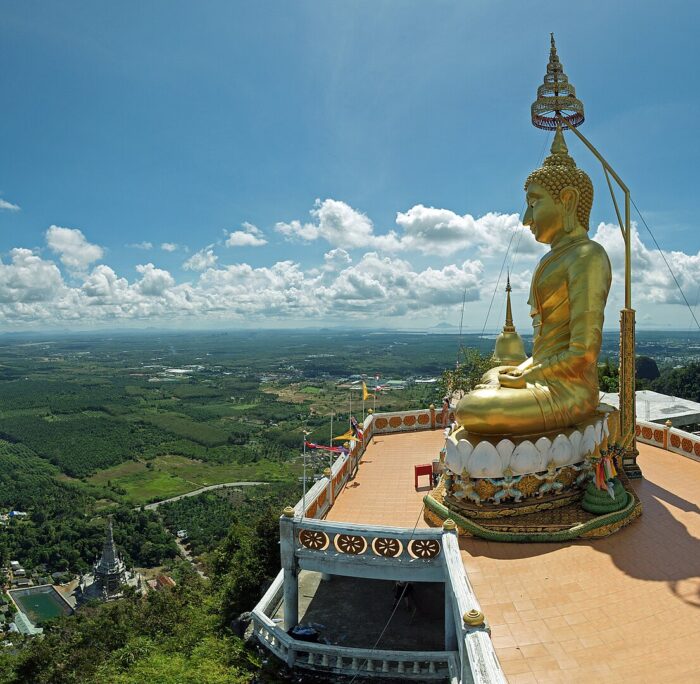Tiger Cave Temple in Krabi: Paw Prints of a Mythical Tiger
The Tiger Cave Temple, also known as Wat Tham Suea, is a sacred Buddhist temple located northeast of Krabi, Thailand. It is known for its stunning Buddha statues, natural caves, and the challenging climb up the limestone mountain. The temple is a significant religious site and attracts visitors from all over the world.
One of the most unique features of the Tiger Cave Temple is the tiger paw prints found in the cave. According to legend, a tiger once lived in the cave and left its paw prints to symbolize its presence. The temple is also known for its tall Buddha statues, including a 9-meter-tall golden statue atop the mountain. Visitors can climb the 1,260 steps to the summit to enjoy breathtaking views of the surrounding area.
Despite the strenuous climb, the Tiger Cave Temple is a popular destination for tourists and locals alike. It offers a unique cultural experience and a chance to explore the area’s natural beauty. Visitors are advised to dress modestly and respectfully, as the temple is a place of worship for the local community.
History of Tiger Cave Temple
Tiger Cave Temple, or Wat Tham Suea, is a sacred Buddhist temple in Krabi, Thailand. The temple’s history dates back to 1975 when a Vipassana monk named Jumnean Seelasettho (Ajahn Jumnean) meditated in the cave. During his meditation, he witnessed tigers roaming around the cave, which led to the discovery of the temple and naming it Wat Tham Suea.
Legend has it that the cave was once home to tigers, and their paw prints can still be seen on the cave walls. The temple is at the beginning of the Khao Phanom mountain chain, just outside Krabi Town in the south-central Krabi province. The temple is known for its steep stair climb to the top of the mountain, where visitors can enjoy stunning panoramic views of the surrounding area.
The Tiger Cave Temple is a significant hilltop Buddhist temple and a popular tourist destination, attracting locals and foreigners alike. It is also an important archaeological site, with evidence of human habitation dating back to prehistoric times. The temple has undergone several renovations and expansions over the years, the most recent being in 2018.
Today, the temple is home to several monks who continue to practice and teach the teachings of Buddha. Visitors can participate in meditation sessions, receive blessings from the monks, and explore the…
Click Here to Read the Full Original Article at Out of Town Blog…
